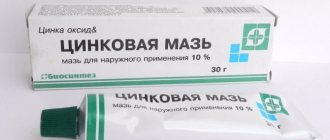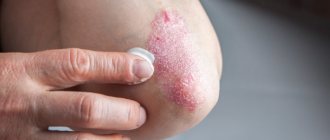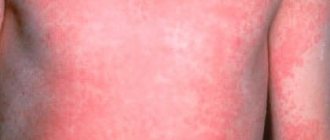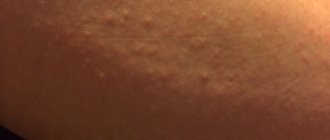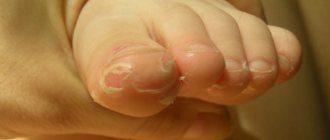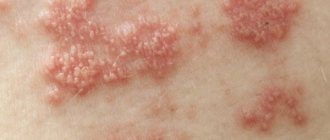Author:
medical editor Evchenko Ekaterina
4 minutes
3373
Almost everyone experiences skin irritation on their hands and the appearance of small cracks in winter, and during a pandemic, when we are forced to wash our hands more often than usual and use alcohol-based sanitizers, this problem has become even more acute. People who adhere to strict diets and limit their consumption of meat, fish, and oil suffer especially. Due to a lack of animal fats, the skin becomes dry and vulnerable to external irritants.
“Because women have more delicate and sensitive skin, it is damaged more easily and more severely. But girls mainly take care of the skin of their hands, wearing gloves and mittens that protect them from the cold. But men generally neglect creams and more often go out with bare hands. Therefore, it is difficult to say who suffers more,” a dermatologist, member of the International Society of Dermatologists (ISD), Ph.D., told MedPortal. Natalia Gaidash.
Causes of dry and itchy skin
The causes of dry skin and itching may vary. They depend on changes in the environment, as well as pathological processes within the body. The most common reasons include:
- The use of cosmetic products with surfactants (surfactants), which can cause dehydration and some allergic reactions: from mild irritation to dermatitis.
- Damage to the epidermis during hot baths, as well as after visiting a swimming pool where the water is chlorinated and disinfected.
- The effect of dry air on the epidermis in rooms with air conditioning and heating devices, as a result of which the fatty protective film is destroyed.
- Unfavorable environmental conditions, negative effects of ultraviolet rays in the summer.
- Hormonal imbalance.
- Poor nutrition, lack of sufficient fluid in the diet, which leads to dehydration of the skin.
- Genetic predisposition.
- Skin diseases and pathologies of internal organs.
- Vitamin deficiency or excess vitamins.
- Long-term use of antibiotics and medications.
- Frequent stressful situations.
- Bad habits.
The danger of flaky and dry skin is that the risk of microtrauma increases. Through damaged areas, various infectious agents that can affect organs and systems easily penetrate into the body. In addition, the skin loses its attractive appearance: it becomes tense, wrinkles and other signs of premature aging appear.
Possible diseases
It is more difficult to cope with a problem if it is caused by any disease caused by functional disorders of internal organs or infection.
The most common diseases in which the skin of the hands itches and peels are:
- Dermatitis (allergic dermatitis, toxicerma, eczema, atopic dermatitis, urticaria). These inflammatory diseases develop under the influence of both internal (diseases of the gastrointestinal tract, liver, kidneys, disruption of the endocrine system, neurological disorders) and external (mechanical, thermal, chemical) factors. Dermatitis is manifested by dry, red skin, rashes, blisters and ulcers and can affect not only the hands, but also other areas of the body, including the face, especially the area around the lips and eyes.
- Fungal diseases (mycoses). Their causative agent is an infectious fungus that is localized on the hands, in the interdigital folds and on the palms of the hands. A characteristic symptom of a fungus is the appearance of a weeping lesion with clear boundaries. The skin affected by the fungus becomes covered with a whitish coating, cracks and blisters appear on it. External changes are accompanied by severe itching.
- Viral skin diseases (herpes, lichen, warts). As a rule, the virus becomes more active against the background of decreased immunity and can affect any part of the body. Thus, herpetic rashes most often occur on the lips, but can also appear on the skin of the hands. These rashes are dangerous not only for the patient himself, but also for others, as they can easily be transmitted through contact.
Peeling of the skin, turning into itching, may also indicate other diseases: hormonal imbalance, metabolic disorders, anemia, internal infections and gastrointestinal diseases.
What diseases cause dry skin?
Very often, various diseases become the cause of dry skin. In particular, such a situation may arise in the following diseases and situations:
- skin diseases of hereditary and acquired nature (dermatitis, psoriasis, herpes, ichthyosis, scaly lichen and others),
- chronic intoxication,
- dystrophy,
- diabetes,
- allergic reactions,
- renal failure,
- problems with the endocrine and digestive system,
- lack of thyroid hormones (hypothyroidism),
- hypovitaminosis,
- seborrhea,
- autoimmune disorders (Sjogren's disease).
How to treat itching in the palms of the hands
Depending on the cause of unpleasant symptoms, patients are prescribed individual therapy. If itching occurs due to allergies, then it can be eliminated using folk remedies. To achieve a positive result, it is necessary to limit contact with the irritant.
Traditional methods
Traditional methods of treatment
Most traditional medicines consist of natural and safe ingredients, so they do not cause any side effects or complications. They can also be used in childhood, during lactation and pregnancy.
- Almond or menthol oil. Apply a small amount to a cotton pad and spread it evenly over the affected area. Repeat the procedure 3 times a day until the itching is completely eliminated.
- Herbal baths. This method will help get rid of burning, redness and irritation in one week. For baths, you can use any herbs that have a calming effect (chamomile, lemon balm, sage, string, etc.). Pour a tablespoon of dry plant into a glass of hot water. Cool the product to a comfortable temperature. Use the baths twice a day for 15-20 minutes.
- Alcohol tincture. To prepare it, you will need to mix a teaspoon of crushed celandine with 50 ml of vodka. Wipe the affected areas of the skin with an alcohol setting at least twice a day.
- If your right palm is very itchy, you can cope with this symptom with the help of tea tree oil. Wipe clean skin of your hands with it 3 times a day. The course of treatment is one week.
- Herb tea. In this case, it is better to use lemon balm. It has a calming effect on the epidermis, relieves itching and redness. A tablespoon of the plant is poured with a glass of boiling water. The resulting herbal tea should be taken until all symptoms completely go away. Treatment usually takes no more than three weeks.
Drug treatment
In more severe cases, unpleasant symptoms can only be eliminated with the help of medications. Before this, you need to visit a dermatologist and undergo a laboratory examination to determine the causes of itching.
There is no need to run to the doctors if you notice slight itching on the epidermis. Also, you should not do this if your left palm itches. From a medical point of view, such a symptom is not the cause of serious illness. We are talking about cases where this condition is observed very rarely.
To get rid of itching due to skin diseases (dermatitis, eczema, fungal infection, scabies, etc.), antihistamines are used. They can also be used for allergic reactions. After the examination, the doctor will select the appropriate drug for you.
If the cause of the itching is not identified, then enterosorbents can be used. The most effective are “Polysorb” and “Enterosgel”. The drugs are taken orally only in the form of an aqueous suspension.
How to deal with dry skin: care products
It is advisable to eliminate any cosmetic defects and unpleasant sensations using an integrated approach. A dermatologist will help you choose the right method for treating dehydrated dermis.
Faced with this problem, many people prefer skin care products. They include:
- means for exfoliating dead cells (peelings, scrubs),
- products with natural ingredients (mineral oils, naturally occurring fats, such as glycerin, beeswax).
Peels and scrubs can be used no more than once a week, and the second group of products is suitable for daily use at any time of the day, but preferably before bed after hygiene procedures.
It is worth noting that oils are a good way to maintain moisture in the outer layers of the skin, and the effectiveness of lotions is enhanced by the fatty acids, ceramides (components of the skin barrier layer) and complex lipids they contain.
It is necessary to use protective cosmetics all year round in any weather. These can be balms against chapped lips in winter, lifting, smoothing masks, insect repellent sprays in the summer. We should not forget about the choice of clothing: it should be made from natural fabrics and be appropriate for the season.
Cold compresses, which dilate small arteries and relax muscles, as well as ointments based on hydrocortisone (a synthetic glucocorticosteroid drug) are highly effective.
Caring products actively eliminate itching, tingling and pulsation of the epidermis, not only cleanse it, but also stimulate the regeneration of damaged cells.
Skin like sandpaper: reasons
The protective barrier of the skin is the thinnest hydro-lipid mantle, which consists of the secretion of sweat and sebaceous glands and dead particles of the stratum corneum of the skin. This mantle retains not only moisture, but also the normal microflora of the skin. Symbiotic bacteria feed on the lipid substrate and create an environment that prevents pathogens from colonizing the skin. If the hydro-lipid mantle is destroyed, the skin of the hands begins to suffer from dryness.
When we wash our hands, treat them with soap, use hot, hard and chlorinated water, we partially wash off the hydro-lipid mantle of the skin. Alcohol-containing antiseptics also dissolve the protective lipid substance of the epidermis and, together with viruses and bacteria, kill beneficial symbiont bacteria necessary for the normal condition of the skin. Dry indoor air and other aggressive factors only aggravate the problem: the skin is extremely easily injured and chapped. As a result, it begins to crack, peel and itch severely.
“We cannot exclude the influence of internal factors: everything is reflected on the skin - hormonal levels, the state of the body, errors in nutrition, deficiency of water consumption, vitamins, microelements. In winter, traditionally, many people experience hypovitaminosis, including a lack of vitamin D, which can worsen skin diseases such as psoriasis and atopic dermatitis,” noted Natalia Gaidash.
Natalia Gaidash, member of the International Society of Dermatology (ISD), Ph.D.
Recommendations from nutritionists
In order to speed up the effect of anti-itch medications, nutritionists give the following recommendations:
- Avoid crash diets. They lead to vitamin deficiency, a lack of nutrients in the body, chemical elements and organic compounds. This causes dry skin. You need to lose excess weight gradually to avoid sagging and stretch marks.
- Change your diet. Add foods containing vitamins A and E: dairy products, liver, buckwheat, carrots, cabbage, peas, greens, cabbage, black currants.
- Limit the intake of diuretics and drinking aids for weight loss. They remove more fluid from the body than normal, dehydrating it.
No more cracks: prevention
To avoid these problems, it is enough to constantly use nourishing hand cream. Carry the cream in your purse and keep it at your workplace. It’s good if the composition includes natural beeswax, olive, cocoa, and shea oils. The product should be applied approximately 30-40 minutes before going outside, the product should be absorbed.
Please note that the cream should not contain glycerin and hyaluronic acid in winter. Glycerin cannot absorb moisture from the air in winter. Since the air in heated rooms is very dry, glycerin will draw moisture from the deep layers of the skin. Hyaluronic acid can give a “snow crust” effect in the cold, that is, freeze and damage the skin even more,” the doctor noted. Moisturizing hand cream with hyaluronic acid in winter can only be used if you do not plan to go outside, for example. as an evening hand care. Dry and irritated skin will react painfully to the use of a cream that contains many alcohols, parabens, preservatives and fragrances.
It is also worth very carefully using rubber gloves in winter, which are recommended to be worn in public places during a pandemic. They can be worn in stores and other public places, but under no circumstances should they be worn on the street or on public transport. Your hands will sweat, become wet, freeze and become even more injured. Therefore, when outdoors, wear gloves that protect from cold and wind, and when entering a room, you can already use rubber ones.
Pharmacy moisturizers
Many pharmaceutical companies offer their moisturizers against dry skin. Various preparations have been created for normal, sensitive, combination and other types of skin.
Moisturizers include lotions, cosmetic oils, creams, and milks. They help the skin, the largest organ, to systematically receive water and protect against the premature appearance of wrinkles.
When choosing a product, you should focus on the following individual components:
- age,
- skin type,
- health status.
Hydrant creams are popular. They have long become a basic remedy for people suffering from seasonal dry skin. Such creams bring water to the inner layers and nourish the cells with the necessary amount of liquid.
Particular attention should be paid to the composition of the moisturizer. Glycerin, water and chia seeds are the most important ingredients needed for intense hydration.
Masks, creams, oil - how to treat cracks in the skin
In most cases, you can solve this problem yourself, without resorting to the help of a doctor.
“Buy cotton gloves and make hand masks daily. Apply a thick layer of rich cream on your hands, preferably containing olive, cocoa or shea butter, put on gloves and wear them as long as possible, or better yet, go to bed. In the morning, remove any remaining cream by gently blotting the skin with a napkin,” the doctor advises.
If the skin is cracked until it bleeds (the knuckles most often suffer), then first of all it is necessary to soften the skin of the hands and create conditions for speedy healing. At home, products with a thick texture, such as natural cocoa butter, hand cream with beeswax or paraffin, can help. These products must be applied after each hand washing or disinfection. Pay attention to the quality of household towels and do not dry damaged skin with a hard cloth.
But if the problem cannot be solved, and the cracks not only do not heal, but also become inflamed, then in this case it is necessary to consult a dermatologist. Do not self-medicate or prescribe yourself serious dermatological medications. Unfortunately, many people use hormonal external agents on their own, notes Natalia Gaidash. Without the supervision of a doctor, this can lead to the fact that the skin begins to rapidly atrophy: become thinner, become covered with wrinkles, and lose its ability to recover. And it will be difficult even for a doctor to cope with this.
Localization of cracks
Cracks on fingers
When your hands itch, crack and peel, cracks and small wounds will inevitably appear. Their most common location is on the fingers and above the wrist joint. Cracks may appear on the fingertips, near the nail bed.
The most delicate places that crack and itch more often than others are the bends of the fingers. Any movement of the hands leads to tension, which can cause cracking and even bleeding. Healing in this area takes a particularly long time, since the person’s hand and fingers are constantly in motion.
